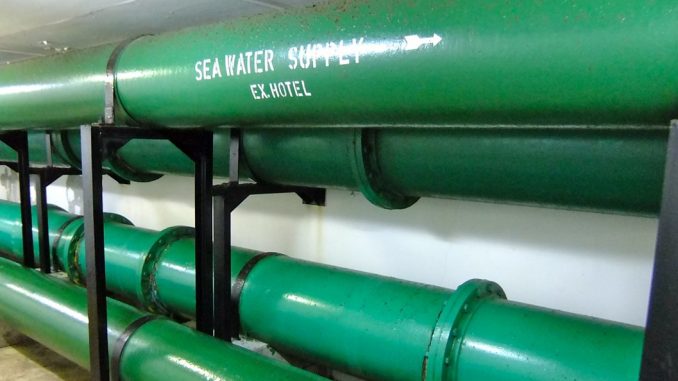
Did you know that 97 percent of the water covering planet Earth is seawater? With water used in everyday processes ranging from cleaning to air conditioning to industry, why then do we not extract from the plentiful source that oceans provide? Welcome to seawater cooling.
The western world has always been somewhat reluctant to invest in the necessary technology and infrastructure needed to turn seawater into a more usable source. With a decent supply of freshwater, there has never been desperate need.
In the water deprived Middle East however, extracting from the ocean is commonplace to make up for a lack of rainfall and freshwater sources. The region is home to 70 percent of the world’s desalination plants, where salt is removed from seawater to provide a clean source of water.
Seawater cooling systems are also found across the Middle East in a range of sectors and industries. Here is everything you need to know about seawater cooling.
What is seawater cooling?
The most common use for water in industry is for cooling machinery. Power stations, petrochemical plants, factories, they all use water at some point in the production process.
Taking freshwater that could be used for human consumption and using it on machinery is a waste of a scarce resource. Here is your second reminder of that 97 percent figure again.
A seawater cooling system recognises this. It instead extracts water from the sea and transfers it to where it is needed, saving freshwater for more worthwhile uses.
How does a seawater cooling system work?
Pumping stations located near the shore extract seawater. The water undergoes a treatment process similar to that of wastewater, passing through filters before being chlorinated to control marine fouling.
It is then pumped into a network of underground pipes which distribute it where required. Once used, the seawater undergoes another cleaning cycle before being returned to the ocean.
Where are seawater cooling systems found?
Seawater cooling systems are widespread in Saudi Arabia, playing a role in oil refineries and other industries. No place better showcases that than Eastern Province city of Jubail.
A small fishing village until 1975, Jubail has been transformed over the past 45 years by the development of the largest industrial city in the world. It is also home to the world’s fourth largest petrochemical company, SABIC.
Much of Jubail’s industry is supplied with water via seawater cooling. The system’s pumping stations have a capacity of 9.9 million cubic meters per day.
Water is distributed through underground canals stretching 12 kilometres east-west and south-north. Distribution pipes feed off these main canals, delivering water into plants and factories.
Seawater cooling systems are also becoming more frequently used for air conditioning systems in the Middle East. Water is extracted from the ocean and sent directly into buildings through pipes.
This same process can also be to heat buildings and cities, including in vast district heating systems which connect places of work and public spaces together in an energy efficient network.
What are the problems with seawater cooling systems?
There are challenges to overcome with seawater cooling systems, which explain why they are not more widespread. High salt content is one, but seawater contains more than 70 other elements.
Six of these — chloride, sodium, sulphur, magnesium, calcium and potassium — make up over 99 percent of all dissolved sea salts.
Where you are in the world dictates the salinity of seawater, so in some areas salt is a less of a problem than in others.
In areas where evaporation rates are high such as the Tropics, water is noticeably more saline. The Baltic Sea in contrast has numerous freshwater run offs into the ocean which dilute seawater to being almost fresh.
With saltwater comes corrosion. This particular problem is overcome by giving pumping station and distribution systems cathodic protection.
Less easy to prevent is damage caused by silt, mud, sand or other fine particles found in seawater. Although the filter stages are in place to prevent such particles entering seawater cooling systems, the passage of time reduces the efficiency of these filters.
A system under such stress from corrosion and what is passing through it is always more susceptible to breakages and failures. And making a seawater cooling system repair is not easy or cheap.
Systems often consist of pipes of huge diameters, making them challenging to fix. Shutting down to fit replacement parts can be costly and disruptive to operations, especially in a district system where numerous sites can be impacted.
There are cost issues beyond repair and replacement to consider too. Seawater might be free to obtain, but the process of pumping, filter treatment, chemical treatment and discharge does not come cheap.
It is mainly for economic reasons that seawater cooling systems are not more widespread beyond dry countries where scarcity of supplies makes them a necessity.
But what of the future? As freshwater sources continue to dwindle because of climate change and population growth, will industries in the west begin to adopt seawater cooling as a means of preserving other water reserves?
Only time will tell.

Leave a Reply